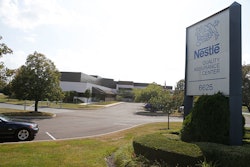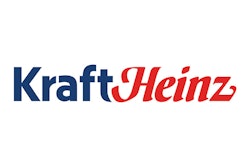Let’s face it — if there’s a way to boost efficiency at your food and beverage facility, it’s usually an obvious decision. Or is it? Plant operational efficiency is becoming a top priority for food plant owners, but sometimes efforts to optimize your facility can create more challenges along the way.
For example, many food plant owners are consolidating manufacturing and distribution under one roof. While this may seem like a quick fix to improve ROI in the supply chain, it could introduce a host of factors that can lead to large-scale inefficiencies throughout your plant. What seemed like “unused” space for that new internal distribution center may have been strategically planned that way to accommodate for growth and future expansion. And just like that, what initially seemed like a no-brainer decision now translates to lost space for future production and inefficient material flow in the facility.
If you’ve been making a lot of changes at your plant recently, or even if it’s been a while, have you thought about the big picture moving forward? A facility assessment can reveal some of those inefficiencies that may have slipped through the cracks.
What is a Facility Assessment?
If you’re focused on improving the efficiency of your supply chain, you should focus on improving the efficiency of your facilities overall.
That can be a lot to juggle at once, especially when companies are often pressured to act quickly. That’s where a facility assessment comes into play. It’s a comprehensive analysis of your food plant that identifies key areas where you can:
- Save money
- Enhance safety
- Streamline production
- Decrease risk
This tool allows you to optimize a project based on hard data to make justifiable, educated decisions instead of relying on guesswork, best estimates or your gut.
Why is it Worth it?
When a plant is built, the focus is often on the initial capital outlay, not the total cost of ownership. A facility assessment allows you to see how those initial decisions may be affecting your plant’s efficiencies and where swaps can be made — no matter your facility’s age.
A facility assessment can benefit food businesses in a number of ways, including:
- Managing and mitigating risk. Learn where potential risks exist in your plant to create proactive solutions versus reactive responses.
- Identifying inefficiencies. Discover what’s bogging your plant down.
- Reducing costs. Understand what can be improved, or cut completely, to save you money.
- Increasing ROI. Identify what equipment and optimizations will best position your plant for long-term gains.
- Identifying non-compliances. Ensure your plant adheres to (and exceeds) minimum requirements set by industry organizations like the Occupational Safety and Health Administration (OSHA), the Food and Drug Administration (FDA), Food Safety Modernization Act (FSMA) and the Safe Quality Food Institute (SQF).
- Optimizing processes. Recognize how, and where, you can fine-tune and streamline processes to increase productivity and efficiency.
While a facility assessment is especially helpful for an older plant, don’t rule one out if your facility recently opened its doors. An assessment can help measure actual versus predicted operational aspects at a newly built plant. It’s an easy way to give you peace of mind that your facility is running as expected or why expectations are not being met.
The Risk of Skipping on a Facility Assessment
What if you don’t perform a facility assessment? You risk suffering the costs of being reactive versus proactive.
By skipping on this crucial check-up, you could potentially be exposing your facility to:
- Recalls
- Food and personnel safety hazards
- Failed audits
- Unnecessary costs
- Plant shutdowns
- Failed industry compliance
- Process inefficiencies
- Losing your competitiveness
How Does it Work?
A facility assessment is conducted in partnership with a third party, and it involves carefully inspecting each step and process of your food plant to identify risks and inefficiencies. The third party then takes those findings and analyzes and interprets the data into unbiased, actionable items you can use to transform your plant into a better facility tomorrow than it is today.
Overall, facility assessments evaluate two key factors: operational reliability/efficiency and payback for the recommended improvements. Of course, each company has its own internal guidelines for its target rate of return. So before you begin your facility assessment, determine how your company defines success and share that with your facility assessment team.
Starting with concrete goals will establish the focus of the facility assessment, ensuring optimizations align with your company’s strategic focus.
Key Areas to Assess for Inefficiencies and Risk
There are three main areas to evaluate within your facility:
- Food safety. Compliance is the lowest bar. The goal is to exceed the minimum. Examine food safety flaws and opportunities for improvement to avoid the ultimate risk: a recall.
- Processing/operating equipment efficiency (OEE). Learn how to analyze the right processing data against a processing schedule to unveil how you can cut costs and increase output.
- Energy consumption (water, electricity and refrigeration). Discover how to achieve energy efficiency that translates to long-term ROI.
Make it a Group Effort
An effective facility assessment requires teamwork. It’s a partnership between your food facility staff and your third-party assessment team.
To garner the best knowledge to drive your assessment, engage the following individuals from your food facility:
- Plant management
- Corporate sponsor (if applicable)
- Operations team
- Product quality team
- Maintenance team
- Sanitation/food safety/quality assurance group
It’s important to reiterate that everyone is on the same team. This can often be misconstrued when you bring on a third-party facility assessment partner. Your plant personnel may think you’ve engaged a team to judge their performance or criticize their decision-making. This is not the case. Ensure your internal team understands the goals, is open to change and is honest in their conversations with your assessment partner.
Now What?
Keep in mind that a facility assessment isn’t just a one-time process. To keep a finger on the pulse of your facility’s efficiencies and performance, strive to conduct a thorough facility assessment once every three-to-five years. This rate can be determined during the initial assessment (longer if you had minimal inefficiencies, shorter if you had many).
Between assessments, you can even develop a monthly checklist to promote a consistent, facility-wide focus on optimization and efficiency. The ultimate goal is to think long-term and to make your food facility better tomorrow than it is today.
About Stellar
Stellar is a fully integrated firm focused on planning, design, pre-construction, construction, refrigeration, mechanical & utility, building envelope, and total operations & maintenance services worldwide. Visit the company's blog at www.stellarfoodforthought.net or learn about its projects at stellar.net.























